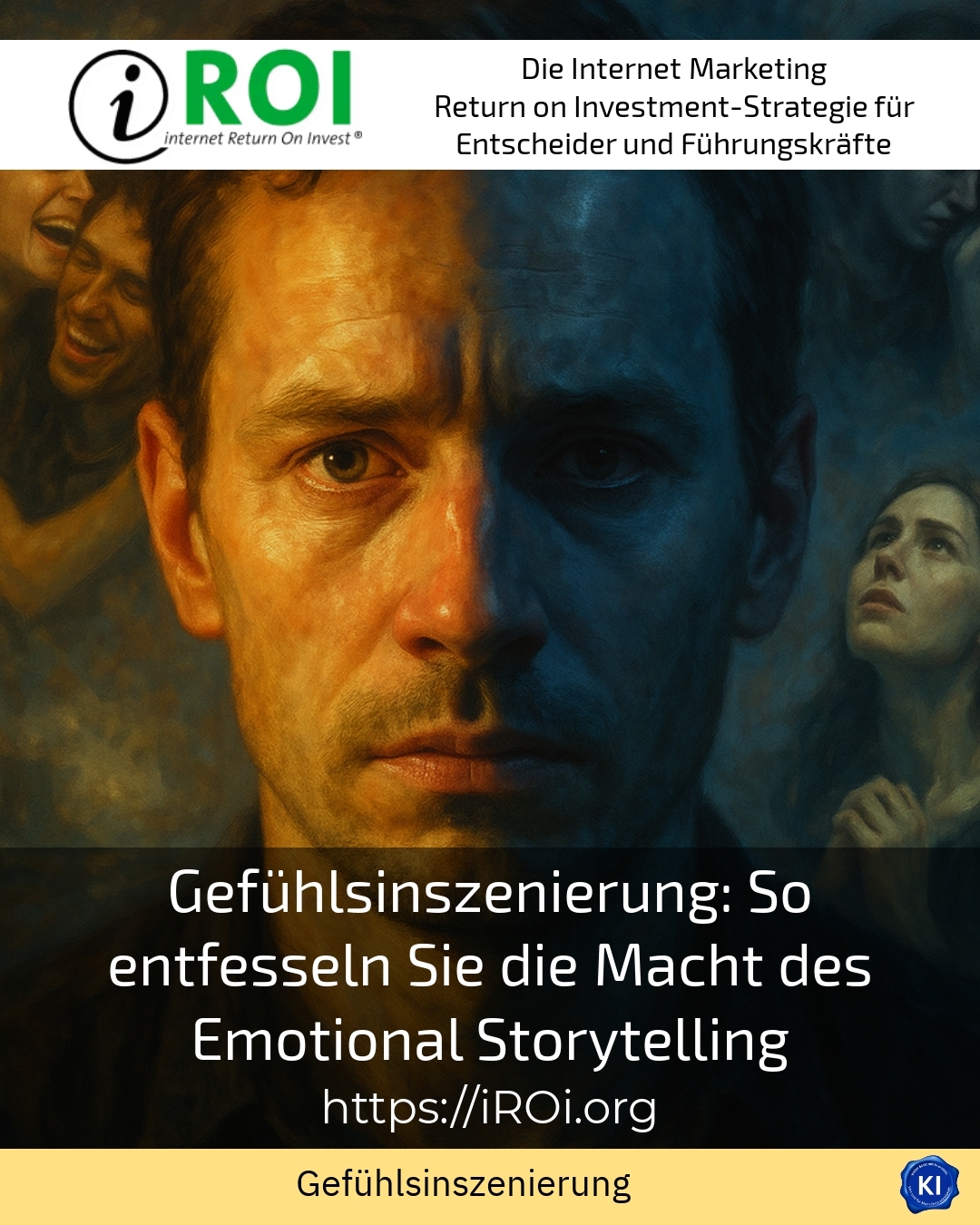Why feelings change your impact - and how you can consciously shape this change
Emotional staging is an often underestimated success factor in projects that involve people, their stories and the targeted integration of emotional issues. Anyone who works in these areas knows that the conscious handling of emotions is by no means a private matter, but has a lasting influence on processes, success and even the growth of organisations. Emotional staging goes beyond simple presentation - it shapes the way we perceive, make decisions, act and communicate.
Clients often report that they feel overwhelmed by their own emotional state when they get involved in new situations. This is where targeted emotional staging comes in: It provides a framework for making emotions visible, tangible and usable.
A prominent example of consciously staging emotions is the professionally staged customer meeting, which aims to build trust and connection. Open questions, active listening and genuine appreciation create an atmosphere in which the participants feel seen and understood.
Why emotional staging is a real project driver
The effect of feelings almost always unfolds in the social sphere. A person's expression of emotion not only changes their own reality, but also triggers a reaction in others[1]. This process of "navigation of feeling" is central to successful projects. Those who neglect the staging of feelings risk misunderstandings, resistance and deviations from objectives.
Typical issues that clients come to us with are dealing with change processes, conflict-laden situations or uncertainty about important decisions. Many report feeling emotionally overwhelmed when taking on new roles or entering unfamiliar territory.
In workshops or coaching sessions, we show how emotional staging promotes trust, commitment and creativity. This creates an emotional frame of reference that sustainably supports solutions.
Practical examples and impulses for your emotional staging
Emotional staging is authentic if it leaves room for individual experiences and at the same time offers clear structures. A practical example: in a strategy workshop with several departments, specific attention was paid to naming different opinions and feelings without judgement. This created an open atmosphere that provided clarity and new impetus.
Another example is the conscious organisation of feedback. Instead of aiming to control emotions or suppress feelings, the staging of emotions is organised in such a way that emotional signals are used creatively. This often leads to better results and sustainable solutions[4].
The targeted visualisation of feelings, for example through emojis, pictures or sketches, also makes the invisible visible. Teams that use this method report greater cohesion and a successful visualisation of feelings that strengthens the sense of togetherness.
BEST PRACTICE with one customer (name hidden due to NDA contract) During a conflict coaching session, it became clear that deep vulnerability and a feeling of powerlessness lay behind superficially objective positional battles. Through targeted emotional staging - for example through reframing and a change of perspective - we were able to develop new solutions together. The atmosphere in the team changed noticeably because feelings were addressed openly and used constructively.
How to integrate emotional staging into everyday life
Creating clear rules and transparent processes
Set fixed framework conditions in which feelings have a place. This can be a "relationship contract" that clarifies the conditions under which personal topics are discussed or how contradictions are dealt with[2]. This creates a culture that recognises the staging of feelings as a valuable part of change and development.
Use four basic feelings as a compass
According to transactional analysis, fear, anger, sadness and joy are the central basic emotions that serve as orientation[2]. The aim is to value these emotions and interpret them as indications of needs and impulses for action. Emotional staging thus becomes a navigation system for difficult situations.
Promoting and shaping emotional diversity
Allow for different feelings. This encourages creativity and helps to resolve seemingly deadlocked situations. Our approach supports you in recognising and redesigning emotional patterns. This is how emotional staging unfolds its full potential.
Emotional staging in change processes
Change brings with it uncertainty - and therefore contradictory feelings. The task of emotional orchestration is to make these emotional movements visible and understandable. For example, you can flank change processes with rituals, storytelling and targeted communication.
Companies that pursue this approach experience how resistance diminishes and the willingness to embrace new ideas increases. Emotional staging creates a framework in which employees feel safe and can break new ground together.
BEST PRACTICE with one customer (name hidden due to NDA contract) In a conflict between management and departments, we were able to channel the uncertainty and anger of all those involved through transparent emotional staging. To do this, we used moderation techniques, an emotional change of perspective and active listening. In the end, this led to constructive solutions that previously seemed unthinkable.
How to use iROI coaching to strengthen your emotional production in a targeted way
iROI coaching helps you to utilise emotions as a driving force in your projects. We analyse your individual environment and develop tailored impulses together. The goal: recognising emotional blockages, professionally shaping the staging of emotions and thus ensuring sustainable success.
Many clients benefit from our specific expertise, for example in the targeted visualisation of emotions, the moderation of team conflicts or the support of change processes. Our approaches help to identify uncertainties and transform them together.
BEST PRACTICE with one customer (name hidden due to NDA contract) In a major project, we used targeted methods of emotional staging to structure the different emotions of everyone involved. This led to greater clarity and strengthened the sense of belonging in the team. In the end, we were able to develop new, sustainable perspectives together.
My analysis
Emotional staging is not an end in itself, but an essential component of successful collaboration. It helps to make the invisible visible, resolve conflicts and actively shape change. Consciously staging emotions creates trust, promotes innovation and enables sustainable developments.
In the end, it is the attitude that determines how feelings are perceived and utilised. The targeted design of emotional staging is therefore an important step in leading projects to success and connecting people.
Further links from the text above:
Emotional history - a beginning with consequences [1]
Feelings and emotions in mediation [2]
Sociologiemagazin: Emotions - how social are our feelings? [4]
For more information and if you have any questions, please contact Contact us or read more blog posts on the topic internet Return on Investment - Marketing here.
















